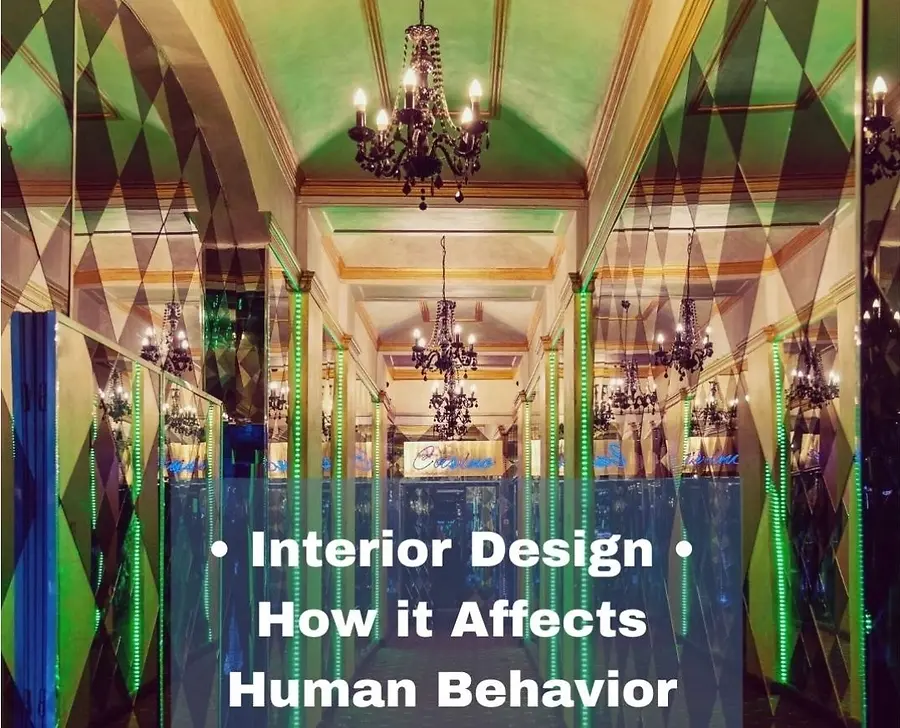The Invisible Architecture of Human Behavior
How the spaces we design shape the habits, emotions, and daily rhythms of the people who inhabit them.

Most people believe great design starts with color palettes, furnishings, finishes, and floor plans. And while those elements shape the visual experience of a space, they only represent about 50% of what makes a room truly work.
The other half — the part almost no one talks about — is something I call The Invisible Architecture of Human Behavior.
In other words:
A home isn’t just a space you design. It’s a space that shapes how people think, feel, move, and behave every single day.
When you understand the behavioral patterns of the people who live within a home, the design becomes more intuitive, more functional, and more emotionally aligned. It becomes something clients didn’t even know they needed — but can’t imagine living without.
Here’s the part that makes people stop and think:
1. The Home You Design Today Determines the Habits They’ll Have Tomorrow
Most homeowners don’t realize they can design their way into:
- better productivity
- healthier habits
- improved sleep
- calmer mornings
- deeper connection
- reduced stress
For example:
A well-placed shoe cabinet by the door can solve years of clutter and frustration.
A countertop-height niche can eliminate morning chaos.
A strategically lit vanity can shift a person’s confidence level.
Great design isn’t decoration.
It’s habit engineering.
2. A Room Can Elevate or Drain a Person — and They Won’t Know Why
Human beings respond subconsciously to:
- ceiling heights
- circulation flow
- lighting temperature
- furniture scale
- texture ratios
- color saturation
If a room is “off,” people often blame their mood… not the space.
But the truth is:
A chaotic room creates a chaotic mind.
A balanced room creates a regulated nervous system.
This is why certain hotel lobbies feel soothing, why some homes make you instantly exhale, and why others feel tense for reasons you can’t quite articulate.
Design is emotional architecture.
3. The Most Powerful Design Tool Isn’t a Material — It’s Sequence
Most designers think in terms of:
“What furniture goes where?”
The real question should be:
“What is the human sequence of this room?”
In other words:
- Where do they enter?
- Where does their eye go first?
- What is the first touchpoint?
- What is the first decision they have to make?
- What do they reach for?
If you design according to the human sequence, the experience becomes seamless.
If you design against it, everything feels inconvenient — even if the room is beautiful.
Sequence is the difference between frustration and flow.
4. Every Room Should Have a “Behavior Anchor”
A behavior anchor is a design element that subtly influences how someone interacts with the environment.
Examples:
- A reading lamp beside a chair encourages quiet time.
- A large kitchen island encourages connection and conversation.
- A designated coffee station encourages calming rituals.
- A mudroom bench encourages order.
- Warm-toned lighting encourages relaxation.
One small anchor can shift the entire energy of a home.
Design isn’t passive — it actively shapes lifestyle.
5. The Secret Most People Never Consider: Design Controls Time
Yes — time.
A poorly designed home steals time:
Where did I put my keys?
Why is this room always a mess?
Why does it take 10 minutes to start cooking?
Why does the morning routine feel chaotic?
But a well-designed home gives time back:
Boom — keys in one place.
Everything has a home.
A coffee station makes mornings smoother.
Smart storage eliminates clutter.
Zoned areas allow multiple people to function at once.
When people say, “This design changed my life,”
what they’re actually saying is:
“This design changed the way my time feels.”
6. A Builder’s Best Friend Is a Designer Who Understands Behavioral Flow
This is where strong partnerships thrive.
When a designer thinks beyond aesthetics and into behavior:
- change orders drop
- client confidence increases
- selections become faster
- construction goes smoother
- fewer things get moved later
- frustration decreases
- decisions align with how people actually live
Builders love clarity.
Behavior-based design provides it.
7. The Future of Interior Design Is Not Just Beautiful — It’s Intelligent
Design that only looks good is outdated.
Design that understands human behavior is where the industry is heading.
The next evolution of our field is:
- sensory-aware
- psychology-driven
- lifestyle-aligned
- emotionally supportive
- wellness-focused
People don’t just want beautiful homes anymore.
They want homes that feel good.
Homes that function intuitively.
Homes that reduce stress instead of adding to it.
This is where design becomes life-changing.
Conclusion
If there’s one insight I want homeowners, builders, and designers to remember, it’s this:
A home is not just a place you live in.
It’s a place that shapes the person you become.
Design is not cosmetic — it’s transformational.
And when we design with behavior in mind, the impact lasts long after the renovation is finished.


